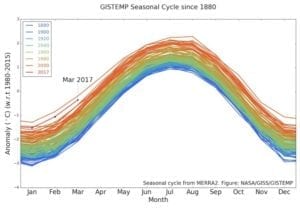Hidden Figures (2016): A great movie; I recommend it highly

The image is from the Jan. 9, 2017 Atlantic article mentioned at the post you are now reading. Image source: 20th Century Fox
In the course of my life, I have been inspired by decency, honesty, fairness, and genuine (as opposed to fake) justice.
It’s been my observation that the pursuit of such qualities as decency, honesty, and so on, appeals to some more than to others.
Thus I must say that I was very moved – tears welled up in my eyes, and my throat felt very tight – when I began to view Hidden Figures (2016), at an old movie theatre not too far from where I live in Long Branch. This is one awesome movie. I am pleased I have lived long enough to have “been there’ in the early 1960s, during the era that us depicted in the film. Thus at that level along with other levels, I can relate to Hidden Figures.
I am pleased as well that a part of me still functions well, despite the passage of the years. That is an aspect of my being that is moved, deeply moved, when I witness kindness, honesty, and people working together in pursuit of the common good.
If you haven’t seen the film, I recommend you see it. I recommend it highly.
Updates

The image is from the April 14, 2017 Climate Central article mentioned at the post you are now reading.
NASA is a character, among many others, in the movie. An April 14, 2017 Climate
Central article, which highlights temperature data from NSA, is entitled: “March Was Second Hottest on Record Globally.”
In Secondhand Time: The Last of the Soviets, First U.S. Edition (2016) by Svetlana Aleksievich, the Nobel-laureate author, there are references to the 1960s space race between the United States and the Soviet Union. I recommend the book highly; it provides a good sense, from a perspective from the other side of the world, of the 1960s era depicted in Hidden Higures.
Context plays a key role, in the event the format of the story permits such a focus
A Jan. 9, 2017 Atlantic article is entitled: “What Sets the Smart Heroines of Hidden Figures Apart: Movies about brilliant scientific or mathematical minds often focus on their subject’s ego – not so with a new film about three African American women who worked at NASA in the ’60s.”
The above-mentioned article notes that the film emphasizes context and collaboration rather than making any given individual the primary focus. That is an aspect of the film that I had not thought about, until I read the article.
I see a connection, in this respect, to the success that Fiona Hill and Clifford Gaddy have achieved, in developing a powerful study of contemporary Russian political life by focusing on formative influences and publicly available texts related to key players. In the latter case, the study features cogent storytelling even in (and to some extent, I think, as a result of) the absence of verifiable biographical details, regarding a particular individual.
It is of interest, as well, that the key role of context, as contrasted to a focus solely on the individual, is also emphasized in Sensemaking: The Power of the Humanities in the Age of the Algorithm (2017).

Leave a Reply
Want to join the discussion?Feel free to contribute!